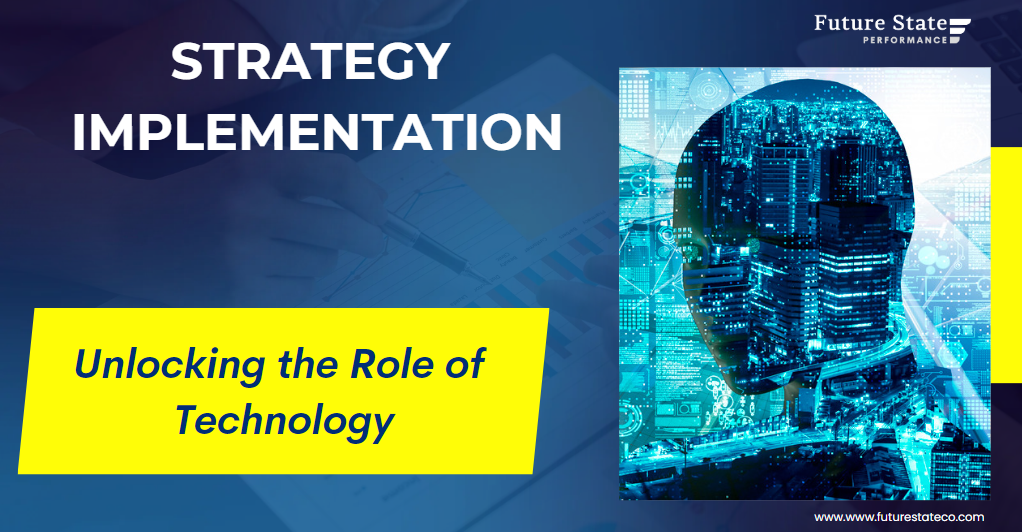In today’s fast-paced business landscape, technology serves as a catalyst for driving strategic initiatives forward. Let’s delve into the key components of leveraging technology for effective strategy implementation:
Technology can act as a powerful enabler, offering tools and platforms to streamline processes, enhance communication, and drive innovation. By harnessing the latest advancements, organisations can gain a competitive edge and accelerate progress towards strategic goals.
And with the onset of artificial intelligence, questions need to be considered
Is it an ally for success or a silent saboteur?
(7) AI in Business: An Ally for Success or a Silent Saboteur? Unravelling the Conundrum | LinkedIn
When looking to leverage technology there are some crucial considerations
Building Requirements:
Before embarking on any technological implementation, it’s crucial to clearly define requirements. This involves identifying specific needs, objectives, and desired outcomes to ensure that technology solutions align with strategic priorities and deliver measurable results.
And breaking it down by capabilities and areas impacted.
This starts with understanding the business needs and from there, digging deeper into the process requirements.
It won’t take long for this list of requirements to get very detailed.
Consequence of Neglect:
Without clearly defined requirements, organisations risk investing in technology solutions that do not address their core challenges or support their strategic objectives, leading to wasted resources and suboptimal outcomes.
Assessing Best Fit:
With a myriad of technological options available, selecting the right fit for your organisation is paramount. Conducting thorough assessments and evaluations allows leaders to identify solutions that meet both current and future needs, considering factors such as scalability, compatibility, and cost-effectiveness.
Consequence of Neglect:
Choosing technology solutions without proper assessment may result in compatibility issues, inadequate functionality, or unexpected costs, hindering effective implementation and undermining strategic objectives.
Implementation:
Successful implementation hinges on meticulous planning, seamless execution, and effective change management, that is, ensuring the business is ready AND skilled to adopt this new system.
As mentioned in previous articles, the 1st step of change is PREPARING for change.
From piloting new systems to training employees, each step must be carefully orchestrated to minimise disruptions and maximise adoption.
Consequence of Neglect:
Poor change management AND / OR implementation can lead to resistance from employees, system failures, and delays in achieving desired outcomes, ultimately derailing the entire strategy implementation process.
Governance:
Establishing robust governance frameworks ensures that technology initiatives remain aligned with overarching strategic objectives. This involves defining roles, responsibilities, and protocols for decision-making, monitoring progress, and mitigating risks to safeguard against potential setbacks.
Consequence of Neglect:
Without proper governance, technology initiatives may lack direction, oversight, and accountability, increasing the likelihood of project failure, budget overruns, and strategic misalignment.
In conclusion,
In conclusion, the integration of technology into strategy implementation is not merely an option but a necessity in today’s dynamic business environment. By leveraging technology effectively, organisations can streamline operations, foster innovation, and gain a competitive edge. However, neglecting any aspect of technology implementation, from building requirements to governance, can have far-reaching consequences. It’s imperative for leaders to recognise the importance of technology in driving strategic success and commit to thorough planning, assessment, and execution. With the right approach, technology can be a powerful tool for realising strategic objectives and propelling organisations towards long-term growth and prosperity
Choose DIGITAL DELIBERATELY
Summary
The article discusses the pivotal role of technology in strategy implementation, highlighting key considerations at each stage.
Leveraging technology enables streamlined processes and innovation.
Building clear requirements ensures alignment with strategic goals, while assessing the best fit minimizes risks of inefficiency.
Effective implementation hinges on meticulous planning and strong change management.
Establishing robust governance frameworks safeguards against setbacks and ensures alignment with strategic objectives.
Neglecting any aspect of technology implementation risks inefficiencies, missed opportunities, and strategic misalignment.
By embracing technology strategically, organisations can drive growth, innovation, and competitiveness in today’s dynamic business landscape.
_______________________
Join the conversation: How are you using technology to support your strategy success?
_______________________
#TeamAlignment #StrategicJourney #BusinessSuccess #LeadershipImpact #Technology #artificialintelligence #digitaltransformation
https://www.linkedin.com/posts/shaylynchbusinessarchitect_teamalignment-strategicjourney-businesssuccess-activity-7165977917863223297-32XC?


